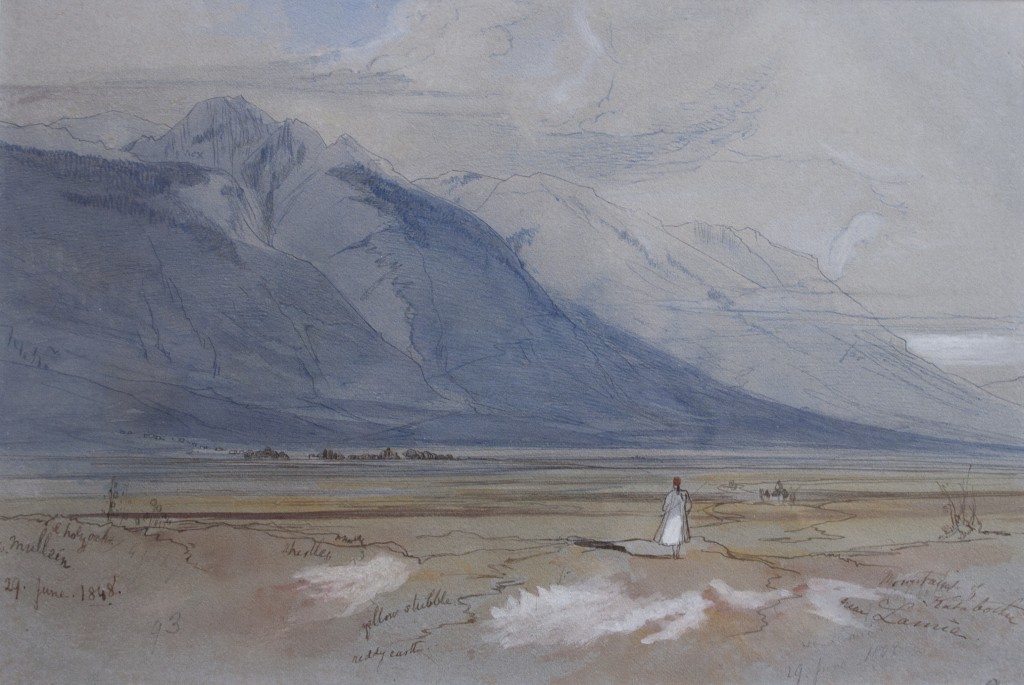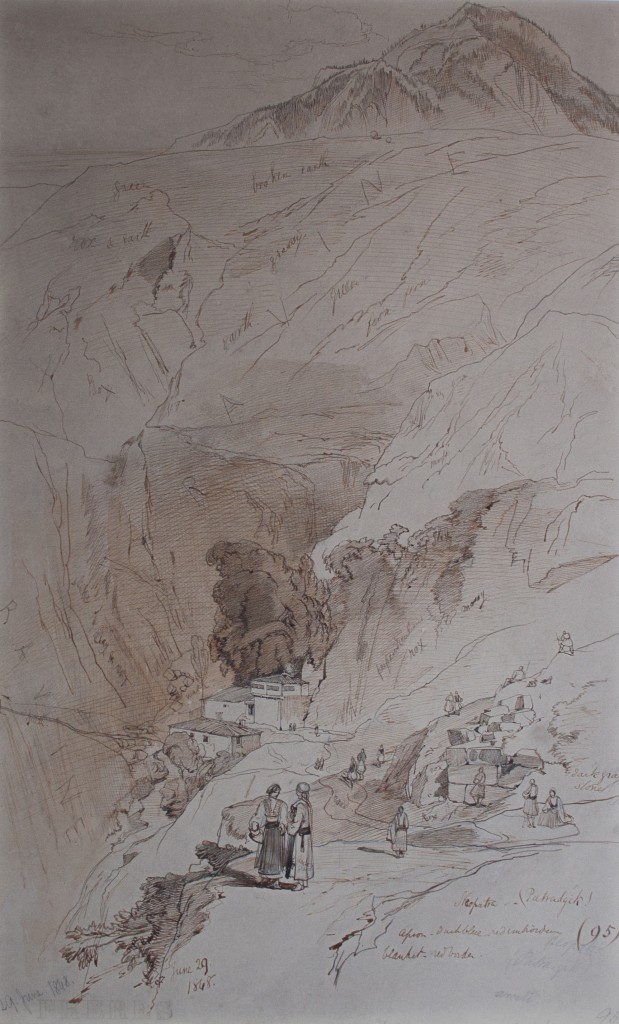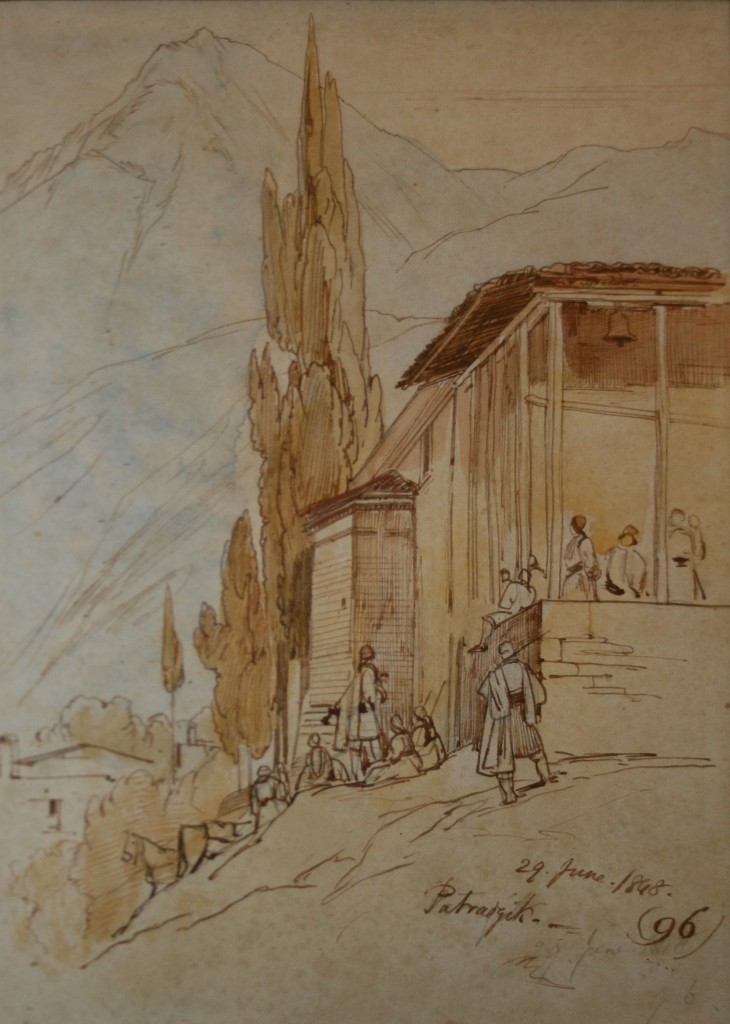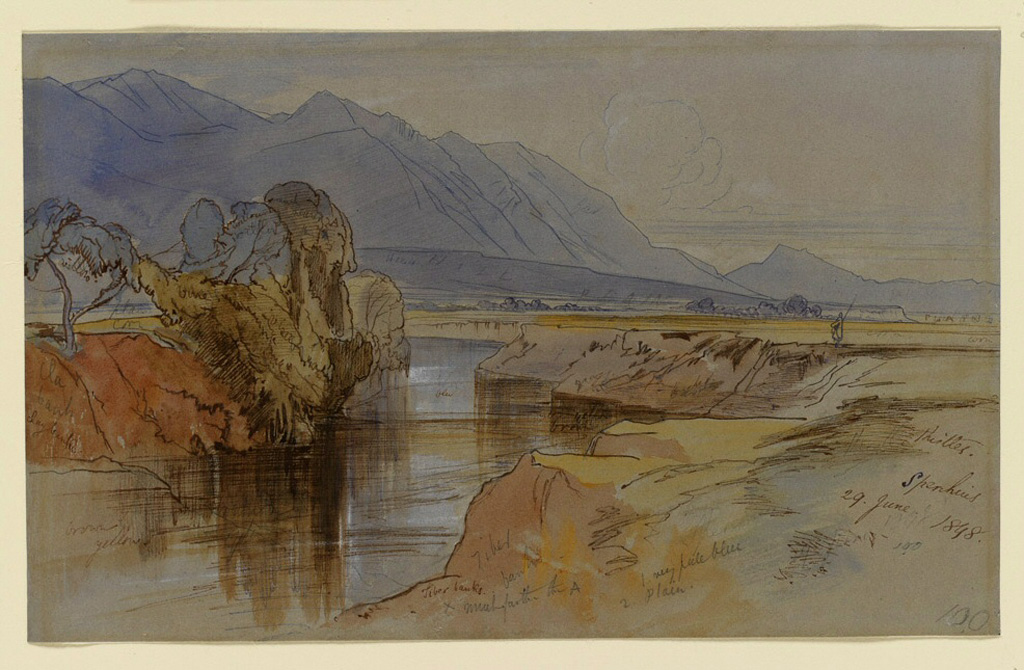Rose at 2.30 a.m., and C. and I were both ready, as agreed on, by 4, but no “galvanized grandmother” nor German came. We waited just one hour and a quarter, and then lost patience. However, I only set off with Janni and Cook and traps, C.M.C. remained. We went down to the plain, and the views of the Katavrothra range were sublime {sketch 93?}– the contrast of that huge dark purple mass with the plain’s pale ochre and greens!

Private Collection
Pass a village — [?Frantzis] — chock full of storks, who now only “reside” in Greece close to the border, whence they can instantly escape into Turkey and safety. Fields of pink hollyhocks, yellow and lilac thistles, clover and convolvulus. Drew twice, slightly. The mountain above Karpenitza is fine. I had left at 5, at 7 Church came up. Leeves had not appeared for another hour, and then without horses; “we overslept ourselves” was all he said. He rode on with his German friend, C. and I together. We had to ford the Spercheius, a wide river, wider perhaps from yesterday’s rain. Then followed a long valley of semi-plain, very dull on the right hand or Turkish side; on the left the Katavothra range is always stupendous. A few trees, many fountains, Indian corn and grain — peasants — and no particular signs of “Rebellion.” Ride, on the whole, not picturesque. Patragik [modern Ypati] seen on a height. After a dull ride over a flat and up slow ascents, we got there at 9 a.m. — a wretched dilapidated village in general, with a few good houses. Women wearing good dresses, dark blue or black aprons, with crimson lines and corners. Many “Palikari” about. Sending Janni on before, to some house with a garden attached. We went first to another dwelling where Leeves was, and also the General Mamouri — to call on the latter — but he was asleep. Then to the bit of ancient or Cyclopean wall[44] below the village, where I drew. Very hot.

Private Collection
We returned at 11 a.m., and called again on ὁ στρατηγός [the general], who was now awake. The great man, clothed in a dress of white muslin, sate smoking on a sofa. He only spoke Greek, but told C. C. and Leeves that everything was now quite quiet, and that we might go anywhere. Leaving L. there, C. and I came up and found our dinner under a tent in a garden of herbs. Enjoyed said dinner and slept afterwards. Along of delays, we were not ready to start till nearly 3 p.m. The fat General was just going out, and the picturesqueness of the soldiers grouped round a sort of church was remarkable, so also the escort or train of General Mamouris going down to the plain. We two followed, and Leeves also, to our dismay, for we thought he would stay at Patragik. Towards the first fountain we met the General returning, with Mme Mamouris and about 250 Cavalry and Infantry, all of whom stopped at the fountain to drink — a more wild and extraordinary procession never did anyone see — dress, attitude and their manner of skipping on or skipping, with occasional jumps, over the open plain.

Private Collection
It was nearly sunset, when we recrossed the Spercheius {sketch 100} — a glorious scene — and dark before we reached Lamia. Shrilly sang the grasshoppers — barked the dogs — clattered the storks. Tea, bed.

Photography by Erik Gould, courtesy of the Museum of Art, Rhode Island School of Design, Providence
[44] Leake (Travels in Northern Greece (2, 18) records “blocks of stone, and foundations of ancient walls”.
